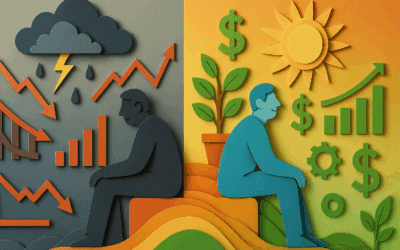Following up with clients and prospects is one of the most important actions a business owner can take. It’s an essential step in the business relationship-building process that will bring you incredible results once mastered.
Just following up with a prospective customer might even give you an advantage over your less diligent competition. How many times do you think you might have lost new business merely because you didn’t follow up fast enough, or at all?
Following up shows that you care about more than just the sale and are interested in building a relationship. This, in turn, helps the customer trust your brand more. It may also encourage them to choose your company again in the future.
You Already Have The Tools
While there are many ways to follow up, including email and text, don’t forget that the smart device you’re probably reading this on is also a phone. Your clients might like to hear your voice once in a while, so go ahead and dial them up.
Pen and paper are great follow up tools too and leave a lasting impression. I recently received a card in the mail from another creative professional I work with quite often. It made my day.
Of course, email is the most common method of following up. Emails should be sent in the following instances.
- After a meeting
- After an event
- After leaving a voicemail
- After a sale
- After an initial consultation
Provide Value in the Follow Up
A follow up email or call isn’t about trying to sell additional products or services. The best follow-up is one that adds value to the recipient. Perhaps some thoughts to help them, or links to useful resources. The more it’s clear you’ve thought about them and how to help them, the more likely they are to classify you as “someone to trust.”
If you can’t add value right away, tell them you’ll be looking out for them in future – and specifically name what you’ll be doing. For example, “…I found your ideas on growing your business through relationships with other business coaches in your local area really interesting. If I identify any coaches who fit the bill in the future, I’ll be sure to pass their names on to you”.
Of course, you’re going to need to make good on your promise one day.
The Clock is Ticking
Don’t let too much time to pass before you follow-up, as the quicker you spark communication, the more likely the person is to have a favorable opinion about your company. It may help to keep some template emails drafted so you can pull from one of those and edit accordingly to help save time when writing your follow up.
Consider creating a workflow that includes drafting a follow-up email before you have a meeting with a client or prospect. This way, you only need to take a few minutes to fill in the details and click send. That’s one less task on your to-do list.
You can also automate follow up reminders using a variety of apps, including IFTTT. IFTTT, which is an acronym for If This Then That, is a free web-based tool that connects apps and services you use to create conditional actions called recipes. For my follow up reminders, I use the recipe If any event ends, then send me an email. Now, when an event on my calendar ends (like a client meeting), I automatically receive an email in my inbox as a prompt to follow up. Once this email prompt hits my inbox, all I need to do is copy the template into a new message and update it with the relevant details before sending it.
The Fortune is in the Follow-up
These old sayings go hand-in-hand, “The Early Bird Catches The Worm,” and “The Fortune is in the Follow-up.” They’ve become old sayings because they are true. Following up with your clients and prospects will make you look professional personally, and enhance your brand reputation exponentially.
A timely follow-up can also mean the difference between closing a sale and hearing that they hired someone before you got around to it.



